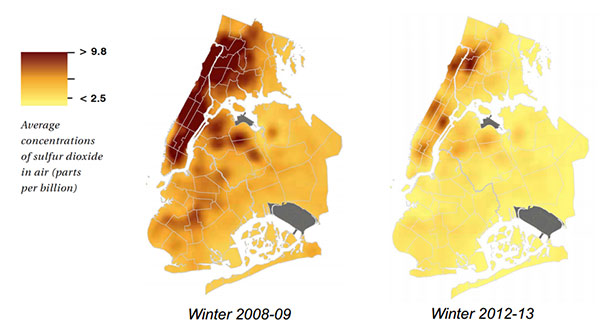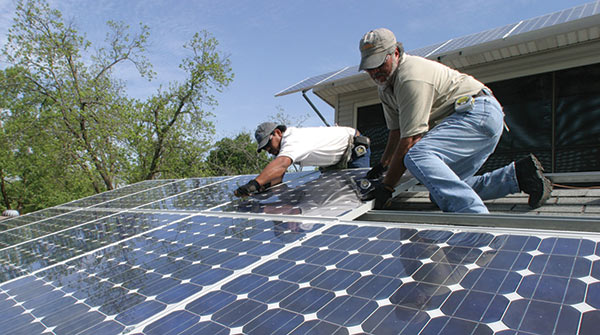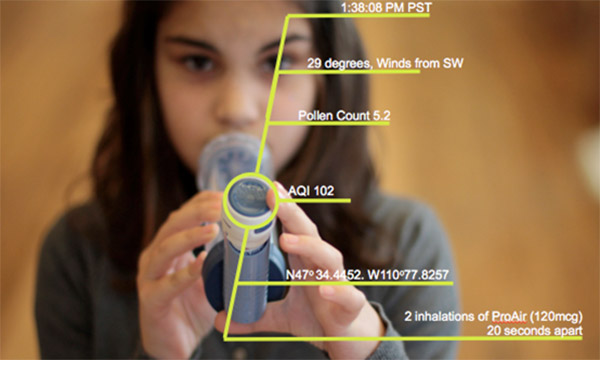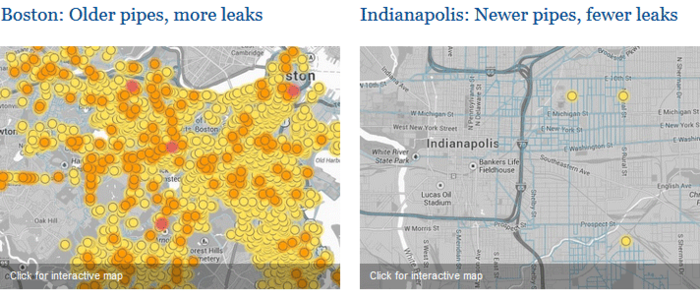8 ways sensors helped solve environmental problems
It’s hard to respond to threats we can’t see, hear or touch, such as pollution of air and water, or toxic chemicals in products we buy. Sophisticated, inexpensive sensors are making the invisible visible, and have the potential to help solve tough environmental challenges.
1980s: Illuminating the cause of acid rain

McIntyre Photography, Inc.
Thirty years ago, taller smokestacks on the east coast were reducing local air pollution. But an unexpected byproduct was killing forests and aquatic life – acid rain.
Some people said that too little was known about the causes of acid rain to warrant doing anything. EDF scientists responded by assembling multiyear data on smokestack emissions and comparing the up-and-down pattern with acid rain data.
An irrefutable correlation emerged, helping to break the policy logjam in Washington. In 1990, Congress passed a law to cut acid rain pollution in half.
To do this analysis in the 1980s, the scientists needed to take over EDF’s entire computer system. “Today,” one of the scientists said, “I could do it all on my phone!”
2008: Cleaning up New York City’s air
Nearly a decade ago, dozens of volunteers fanned out across New York City wearing backpacks with instruments to measure air pollutants. Unlike the few stationary rooftop monitors installed at the time, they took measurements near eye level and followed routes typical of an older adult’s day or a child’s walk to school.
The study led to more research that revealed a surprising new finding: Just 1 percent of New York City’s buildings were spewing more soot into the air than all the city’s cars and trucks combined.
EDF worked with then-Mayor Michael Bloomberg on a program called Clean Heat, which uses private financing to help building owners convert to cleaner fuel.
Six thousand buildings have made the upgrade and now, New Yorkers breathe visibly cleaner air.

2010: More data means smarter energy choices
Meter readers used to check your energy consumption once a month. Now, smart meters check every 15 minutes.
In Austin, Texas, EDF’s Pecan Street smart grid project takes residential energy monitoring even further with sensors that take measurements every 15 seconds. This project yields the largest database of energy use on the planet.
When the Texas Advanced Computing Center analyzed this data, the center discovered a simple change to the direction of solar panel installation would increase efficiency. In the summer, electricity demand peaks in the late afternoon as people return home and turn up the air conditioning. Even though south-facing solar panels produce more total energy, their energy output drops in the afternoon. West-facing panels better match supply with peak demand.
The more we know about energy use, the more efficient we can make our electric grid.

2013: How do you plug a gas leak you can’t see?
Methane is responsible for one-quarter of the global warming we’re experiencing today. While you may associate methane with cows, leaks in our natural gas system are actually a huge source of methane emissions.
Many methane leaks are easy and cheap to fix – if you know where they are.
In these side-by-side pictures, an infrared sensor shows what the naked eye can’t: A large cloud of methane escaping from a wellhead.

Photo credit: TCEQ
Over the past two years, EDF has coordinated a series of studies to pinpoint where methane is leaking, including a global competition to design inexpensive detectors – essentially smoke alarms – for these invisible leaks.
Today, natural gas well pads are checked a few times a year, at best. Imagine how much pollution we could prevent if detectors scanned continuously for leaks on every well pad.
2014: Mapping methane leaks with Google
EDF has partnered with Google Earth Outreach to track methane emissions from natural gas distribution pipelines by attaching detectors to Street View cars. Unlike conventional methods for measuring leaks, which are slow and cumbersome, our method can take city-wide surveys to determine the combined climate impact of these leaky pipe systems.
We’ve produced maps that have made this previously invisible source of climate pollution all too apparent.
In Boston alone we found more than 2,300 leaks – one leak per mile we drove. Just one of the high-level leaks emits roughly 60,000 liters of natural gas each day. Compare that with Indianapolis, which has replaced its older pipes, where we detected just one leak per 200 miles driven and all leaks were low.
2014: Treat your asthma while tracking pollution

Photo credit: Propeller Health
The city of Louisville, Kentucky, is equipping inhalers with GPS units that send a signal whenever they’re used. Patterns in this data can help us identify asthma hotspots.
In the future, if Louisville gets more street-level air quality monitors, the inhaler usage data could be mapped against neighborhood air pollution, spurring action to reduce the pollution.
Mom’s Clean Air Force is a network of 500,000 parents that are fighting for air pollution limits. Imagine if these parents had data in their hands that directly connected asthma attacks to air pollution in cities across the U.S. when they met with EPA administrators and lobbied on Capitol Hill. The need for cleaning up our air would be hard to refute.
2016: Wearable monitors detect toxic chemicals

Tracking our everyday exposure to chemicals used to require bulky, expensive electronic monitors. Now, simple wristbands can show a more complete picture.
The wristbands – produced by MyExposome and using technology developed at Oregon State University – absorb up to 1,500 chemicals in the air, water and everyday consumer products. We began partnering with MyExposome in 2015 to conduct pilot projects using the wristbands.
In the latest project, participants from across the U.S. wore the wristband for a week in 2016 to learn about chemicals in their environment. Averi, an Ohio college student, came into contact with a number of chemicals that are in personal care products.
It struck me that I may be interacting with the most toxic chemicals when I am showering … in the place where I am trying to get clean!
Averi, wristband project participant
What if these wristbands were as common as fitness trackers? That data would be a powerful tool in our fight to remove toxic chemicals from our environment.
2017: Mapping air pollution with mobile sensors
Air pollution is dangerous to our health, but we can’t see it and it’s hard to measure. So how do we protect people from it?
EDF and Google Earth Outreach convened a mobile measurement team to assess air pollution in West Oakland, California, at a level of detail that was nearly impossible before.
Conventionally, stationary air quality monitors provide most of the information we have about air quality in U.S. cities. This new mobile methodology allows us to collect much more data, and to collect it at street level, where people are actually breathing the air.
So next, working with additional partners, we’ll analyze health data to examine the health implications for people who experience long-term exposure to points of higher pollution.
The future: Many more sensors to come
There are countless other examples of sensor technology in the works that can help solve a host of environmental challenges:
- Water meters that detect leaks
- Traffic sensors to help reduce congestion
- Real-time fishing data radioed from ship to shore, to help manage catch limits
- GPS-enabled tractors that could prevent farmers from using too much fertilizer
- Wearable air pollution sensors that would crowdsource pollution hot spot data
Imagine how powerful the new world of information will be when low-cost sensors can provide data directly to citizens and advocacy groups.
Act when it matters most
Every day more than 60 people sign up for news and alerts, to find out when their support helps most. Will you join them? (Read our privacy statement.)













